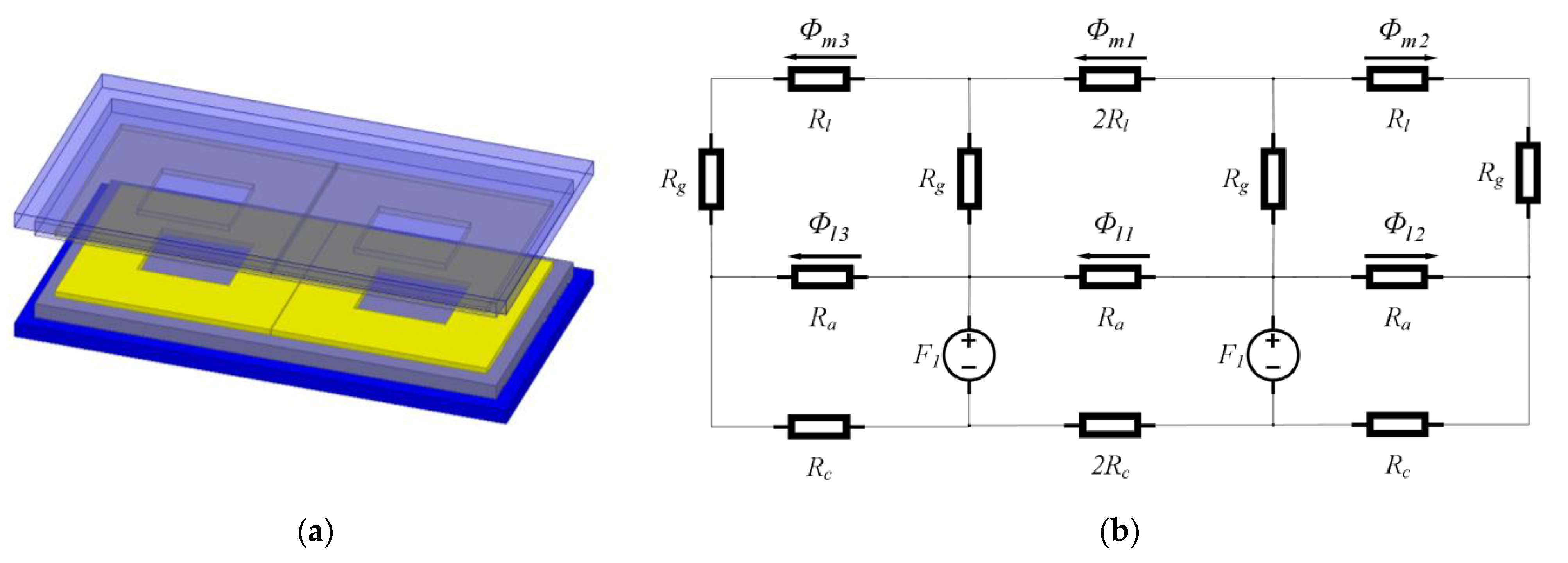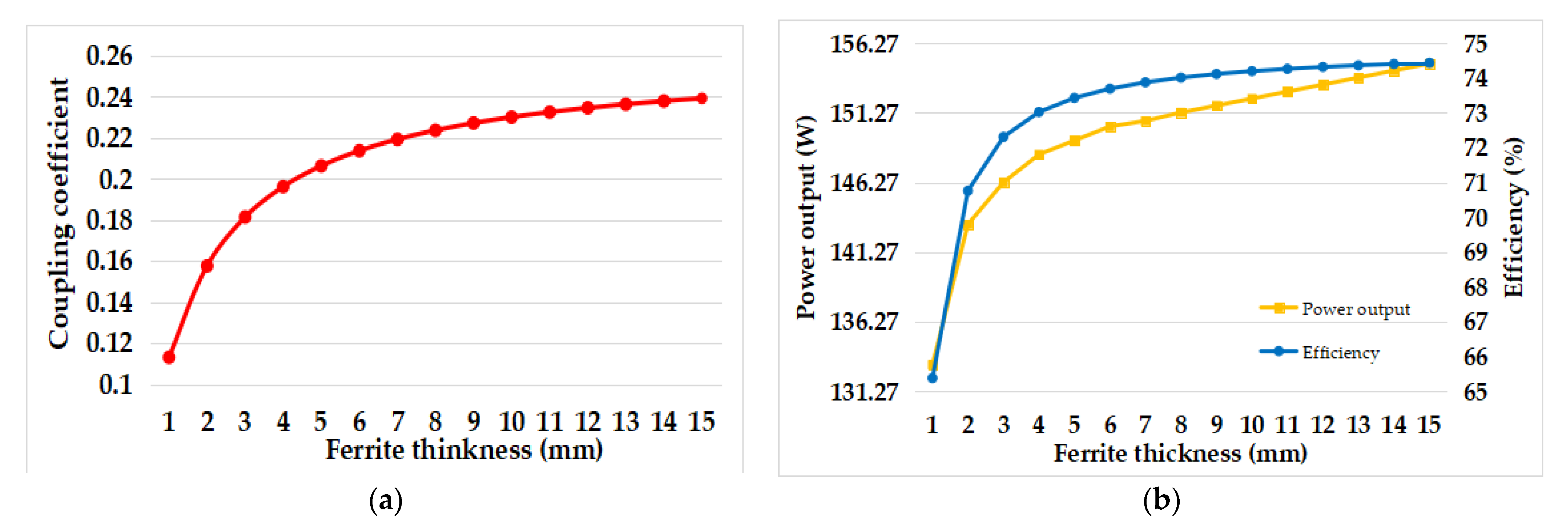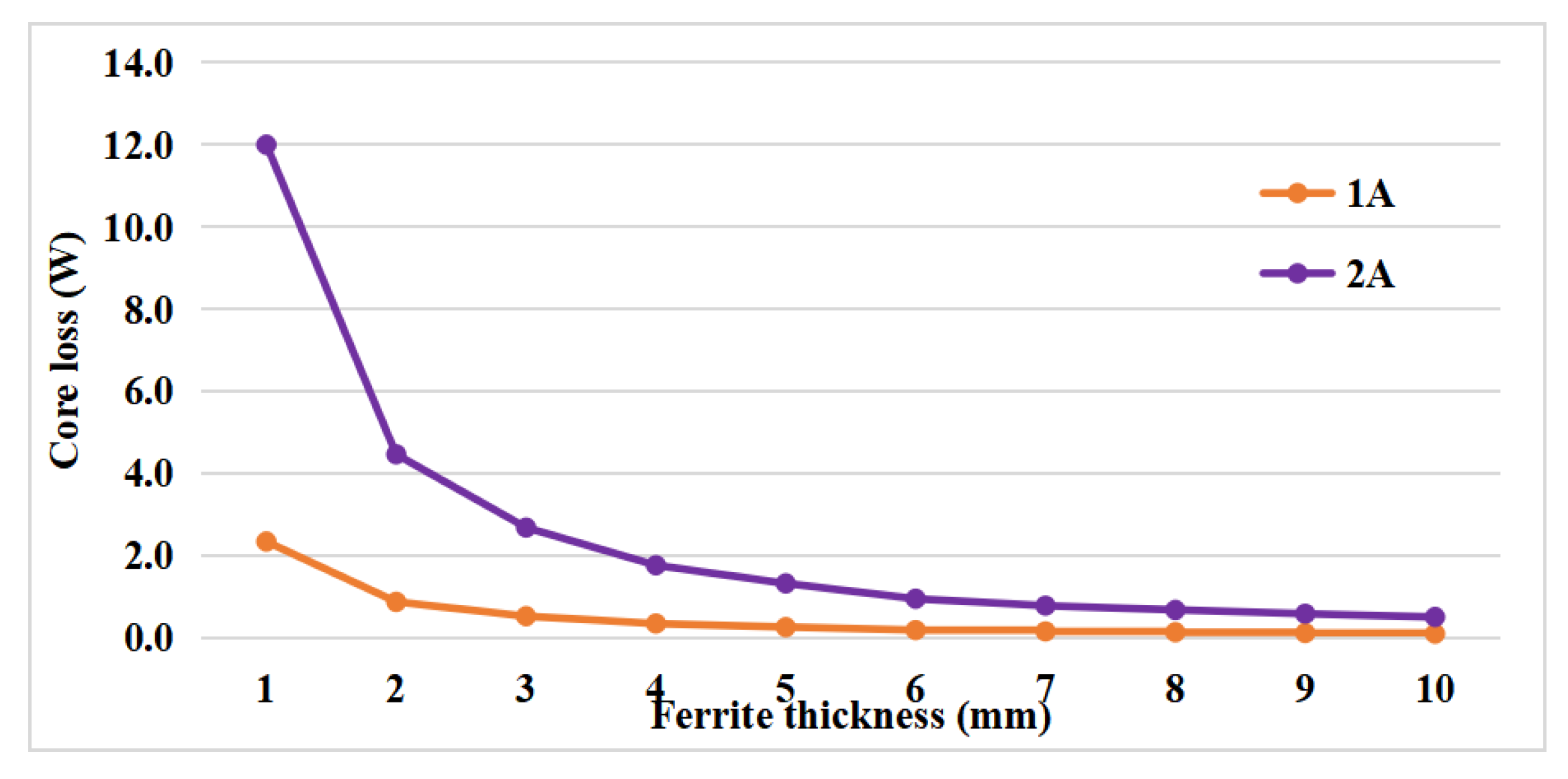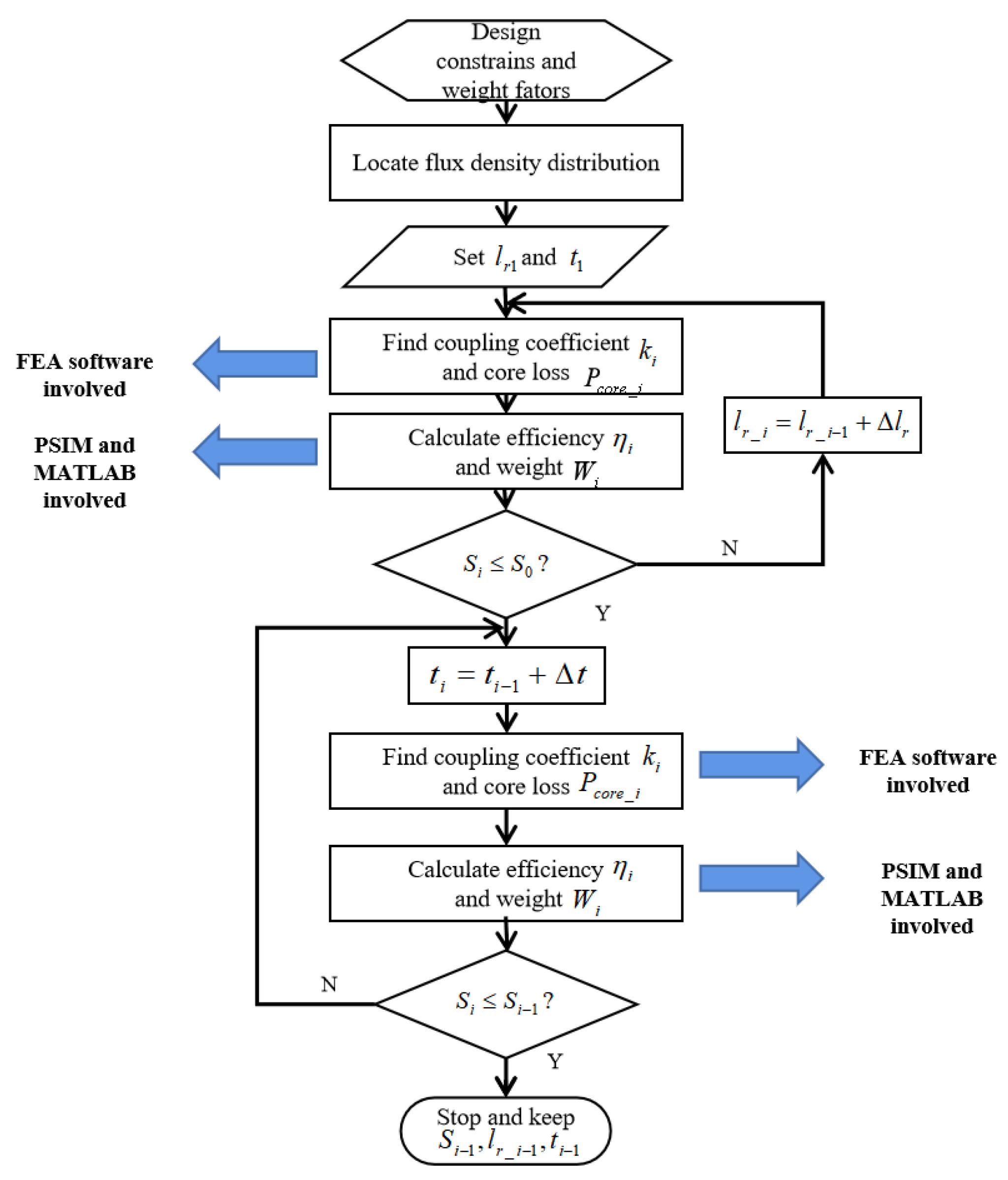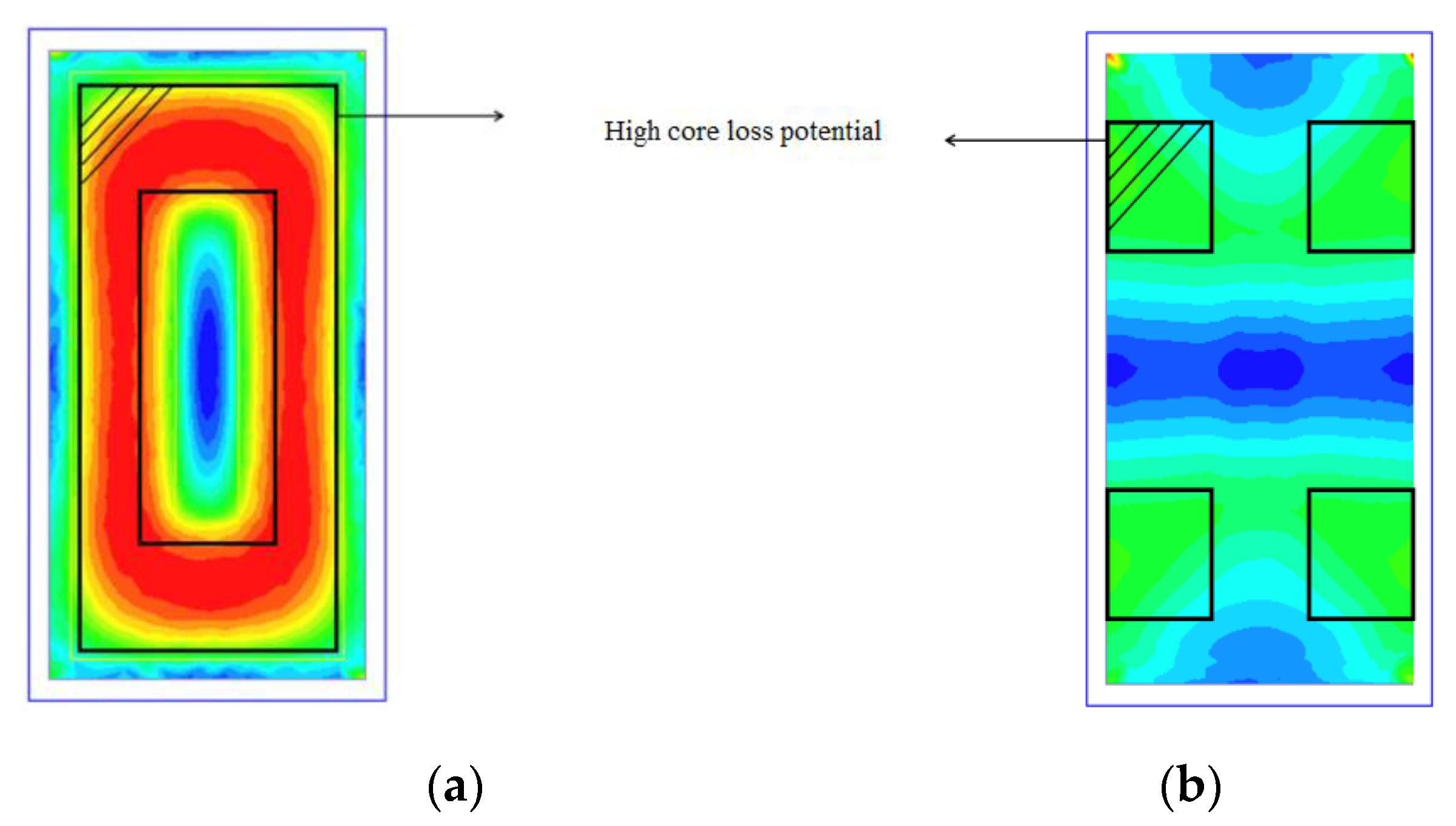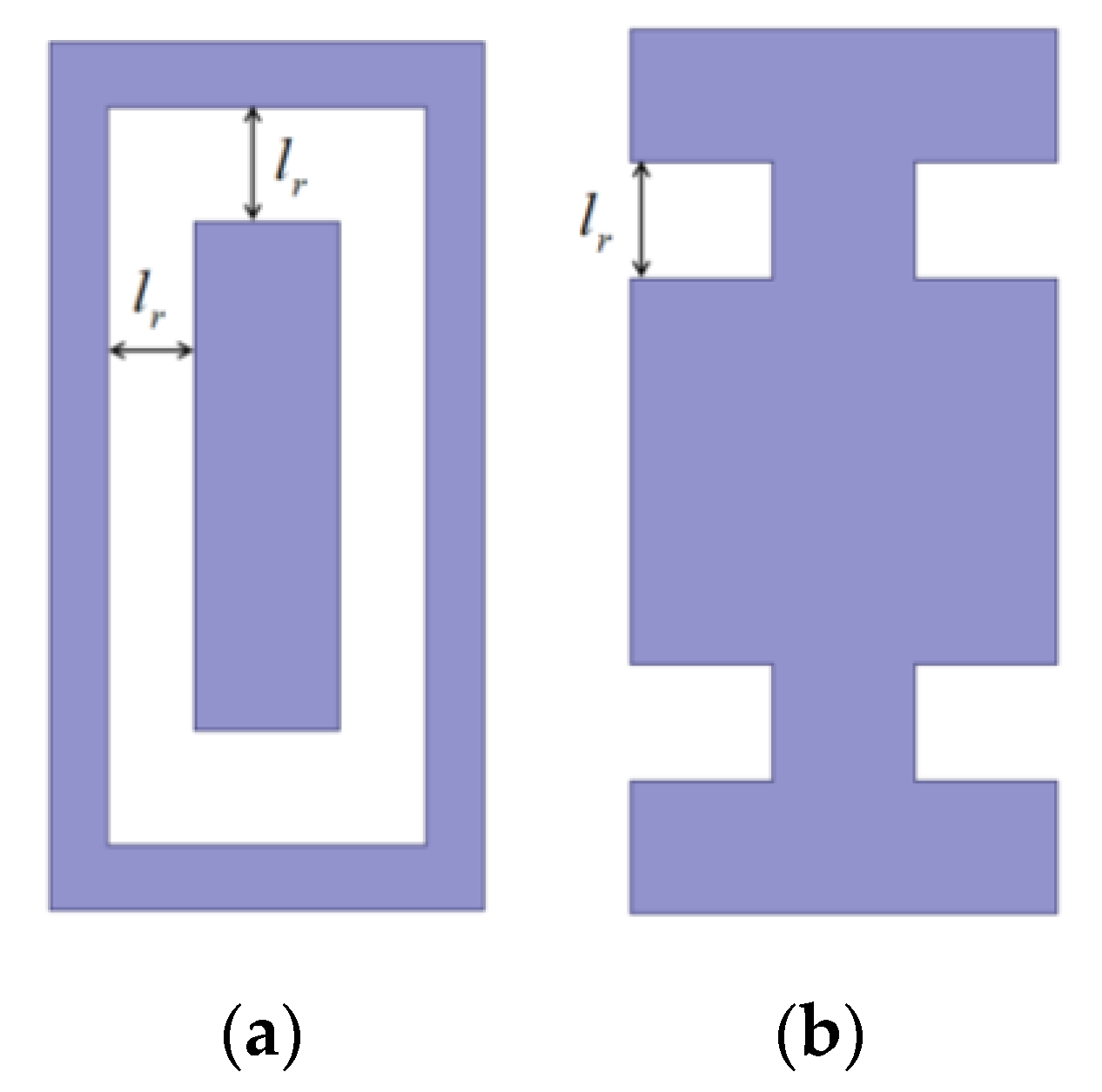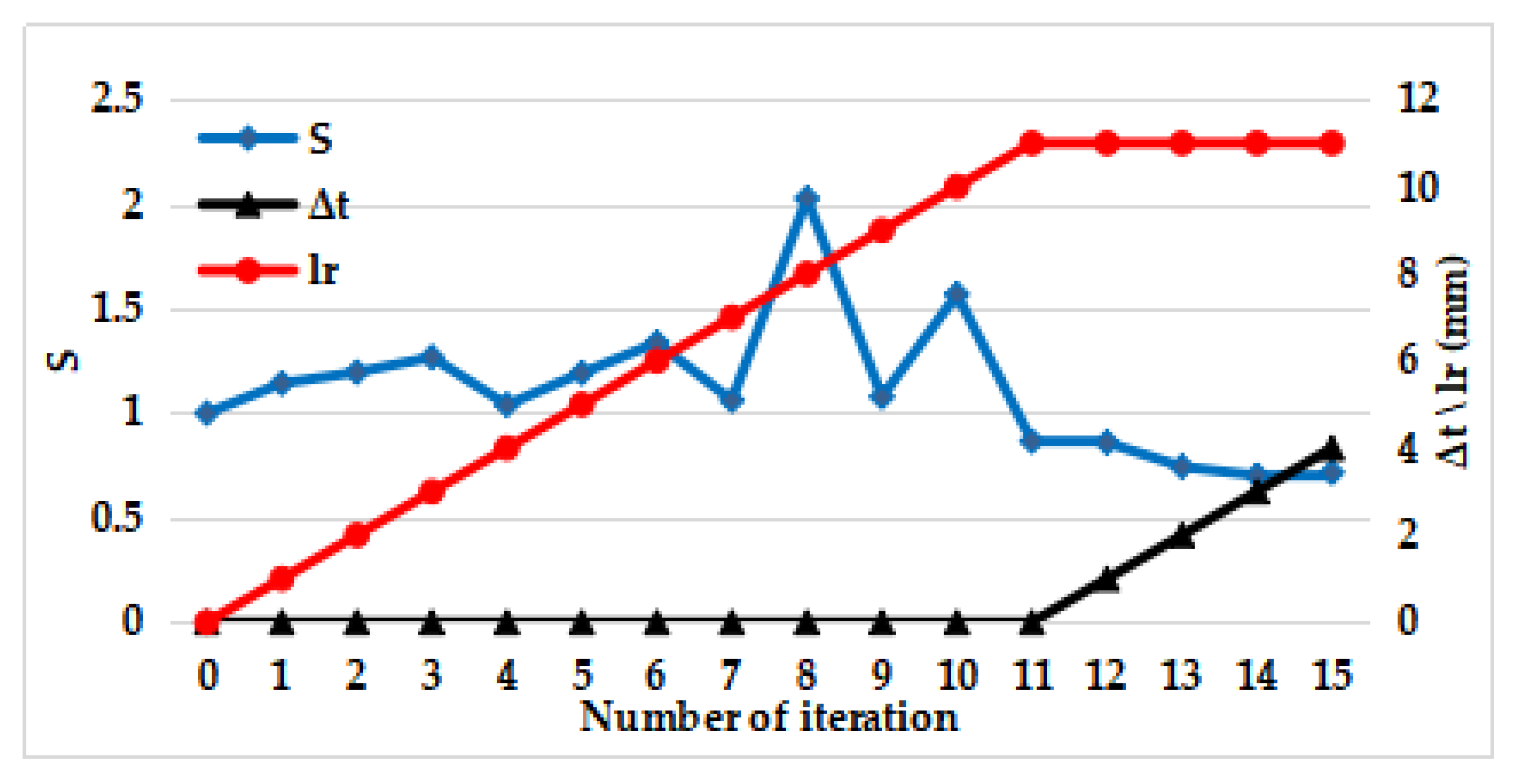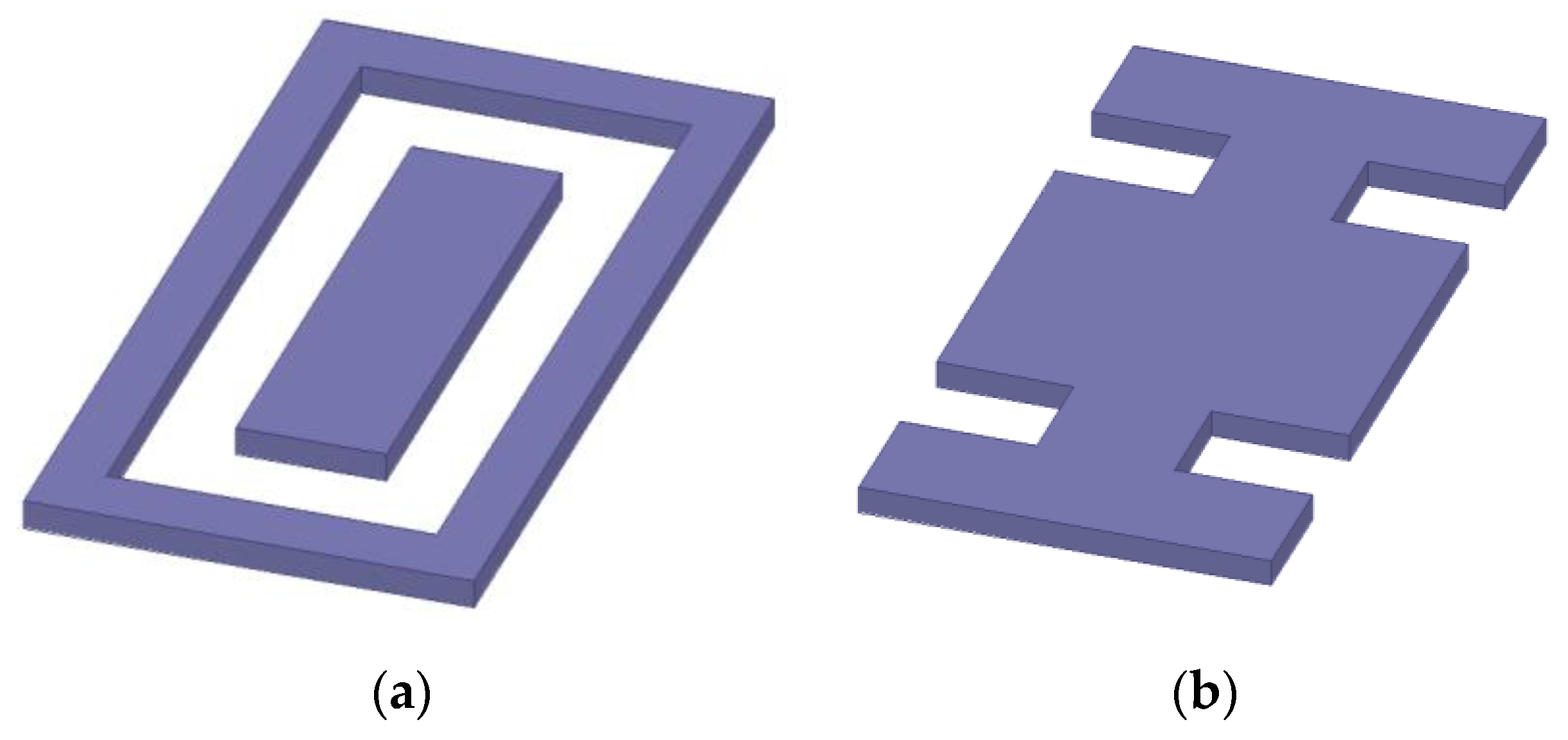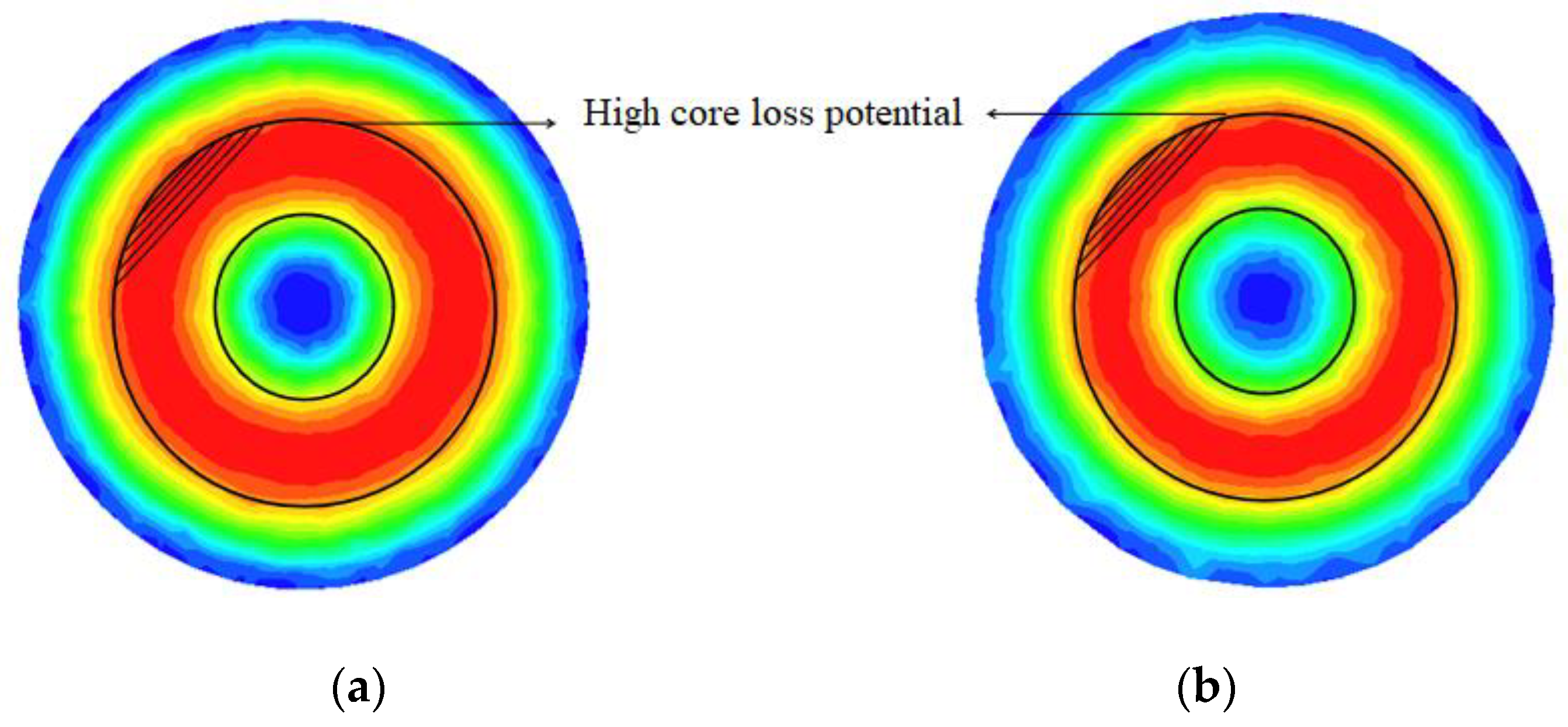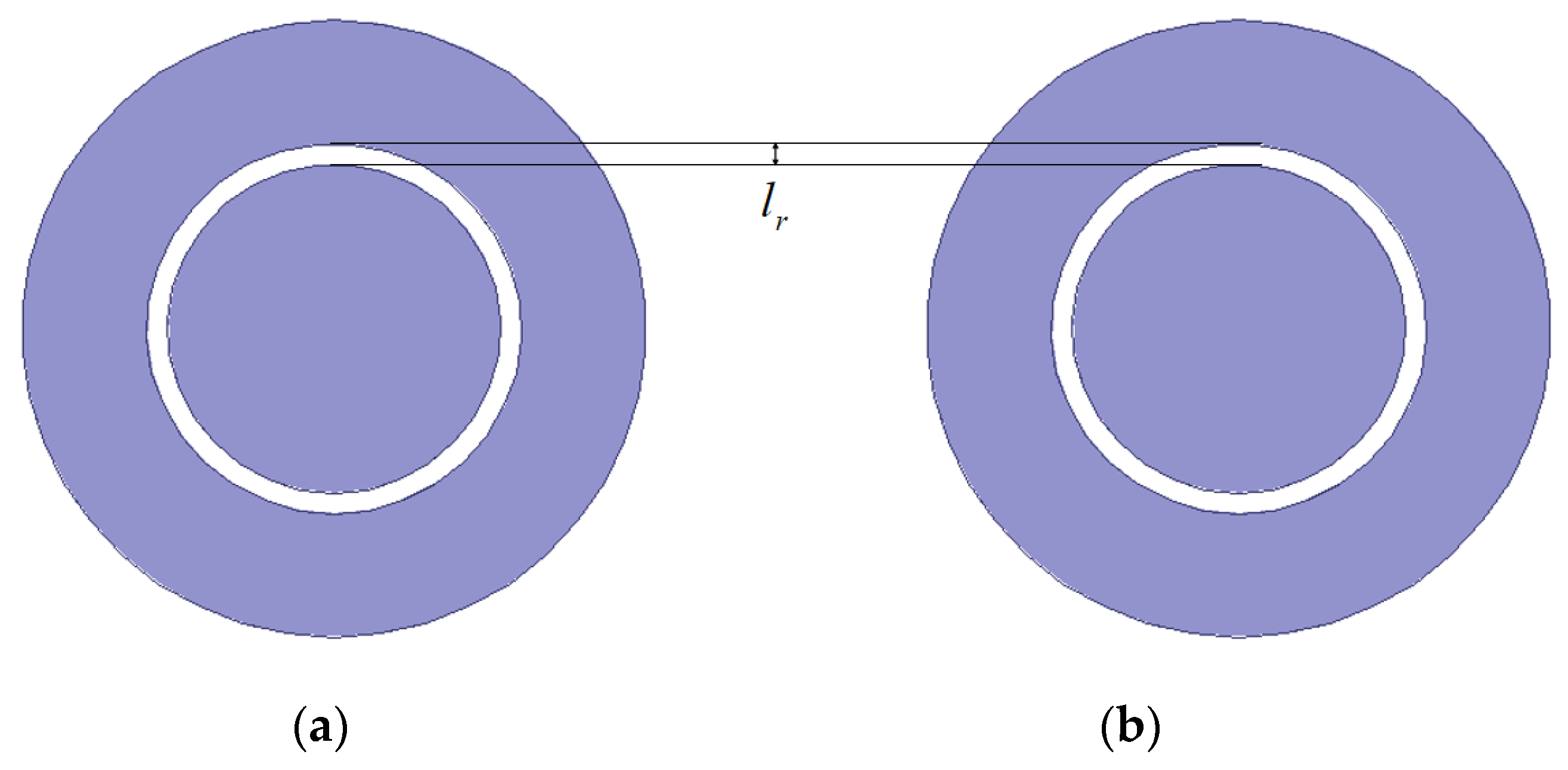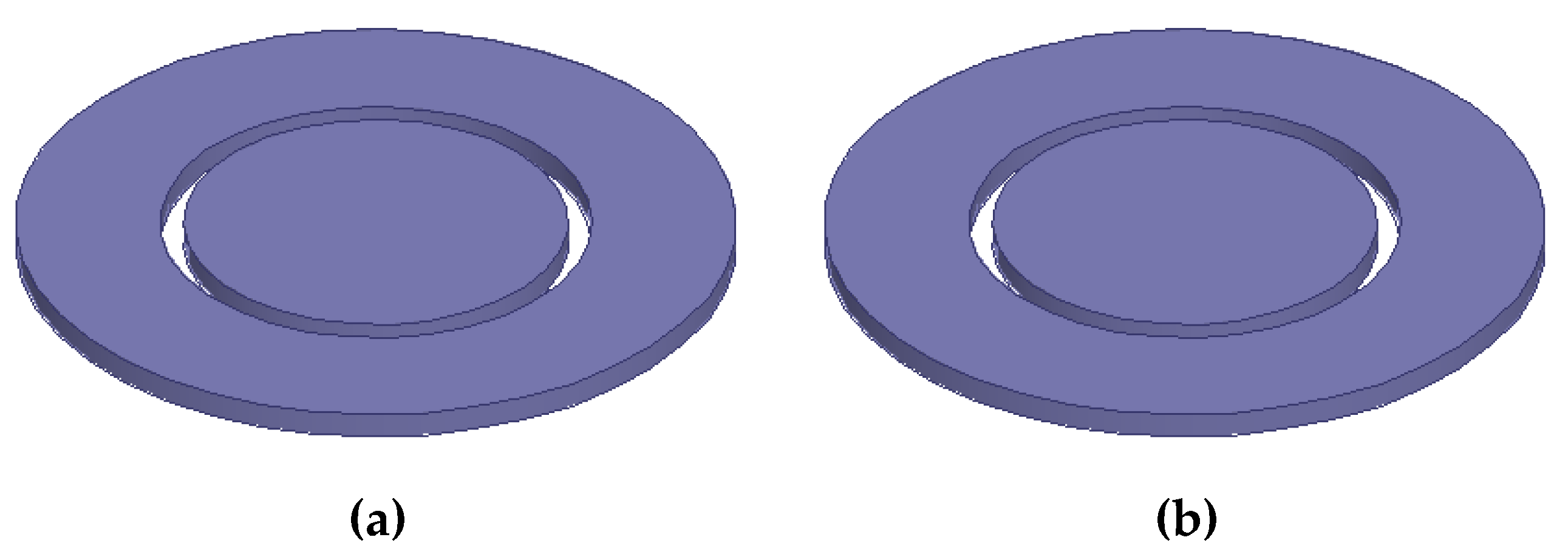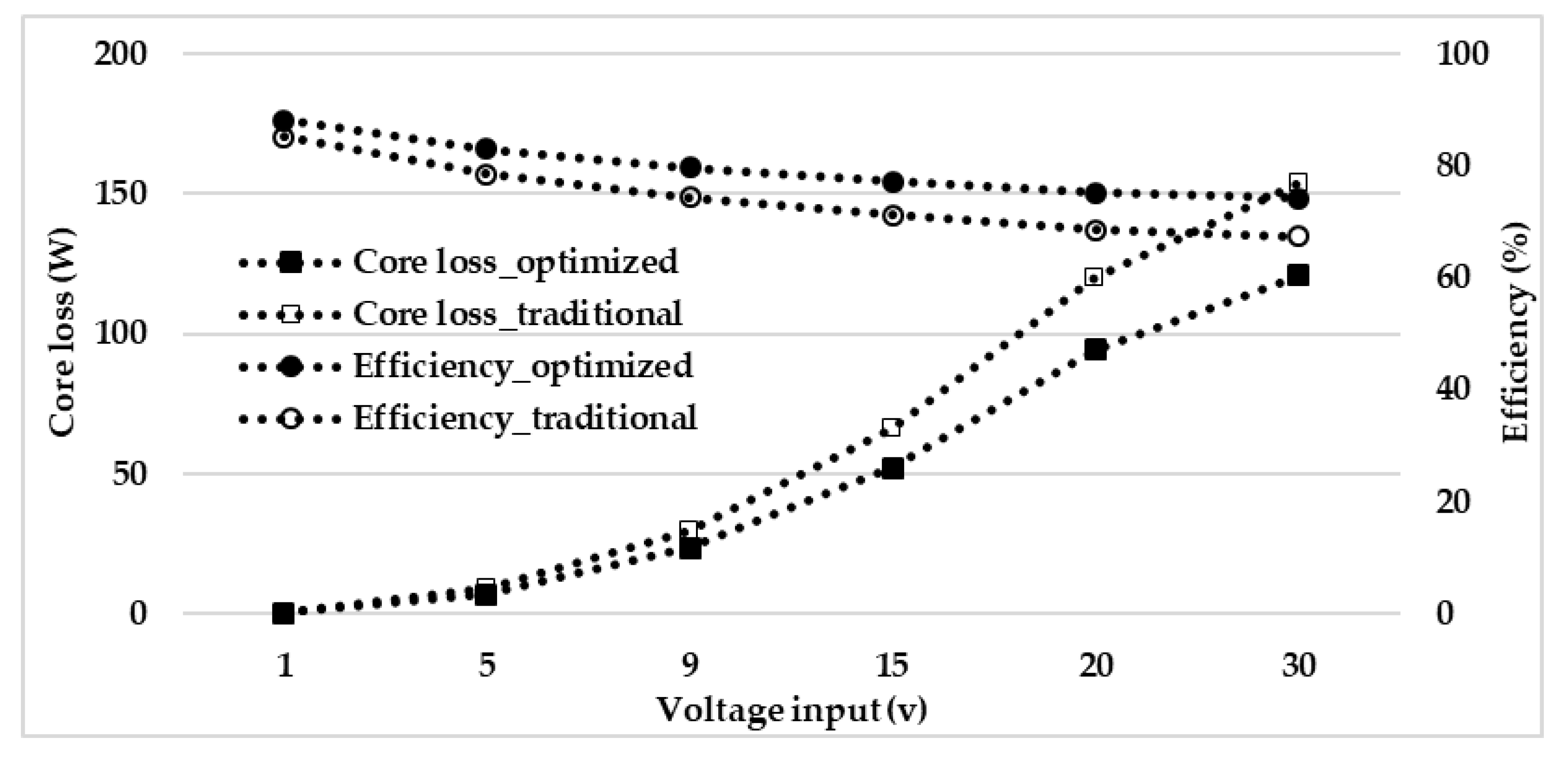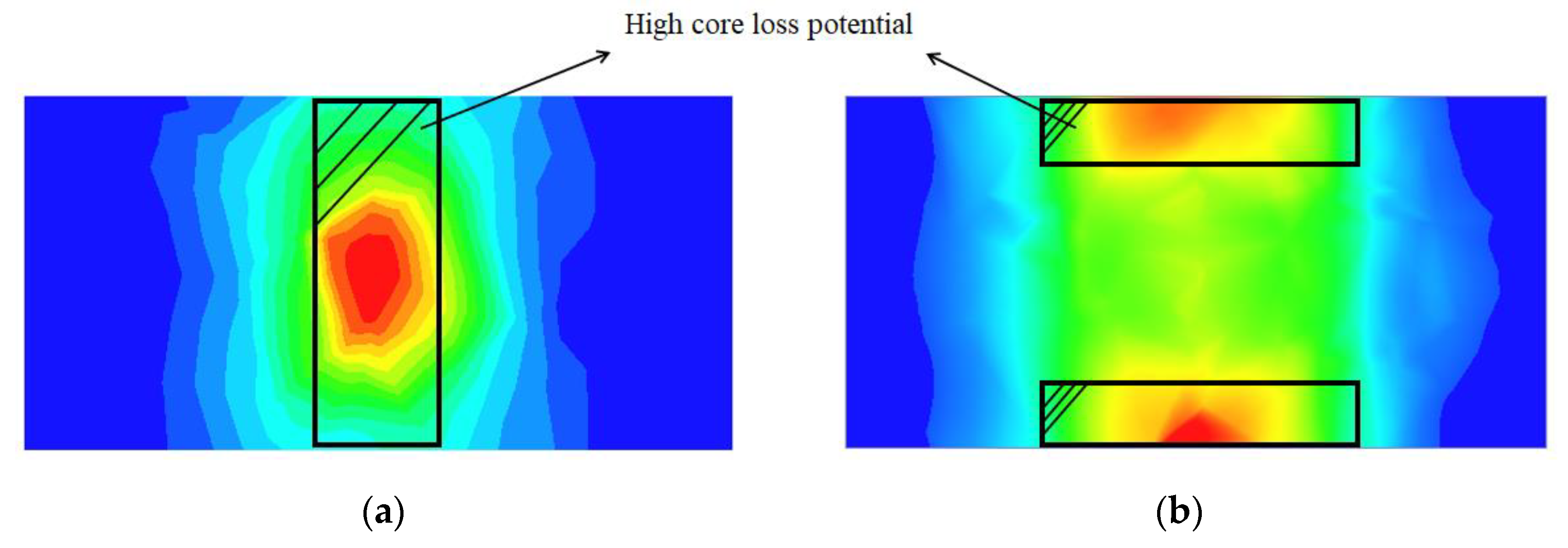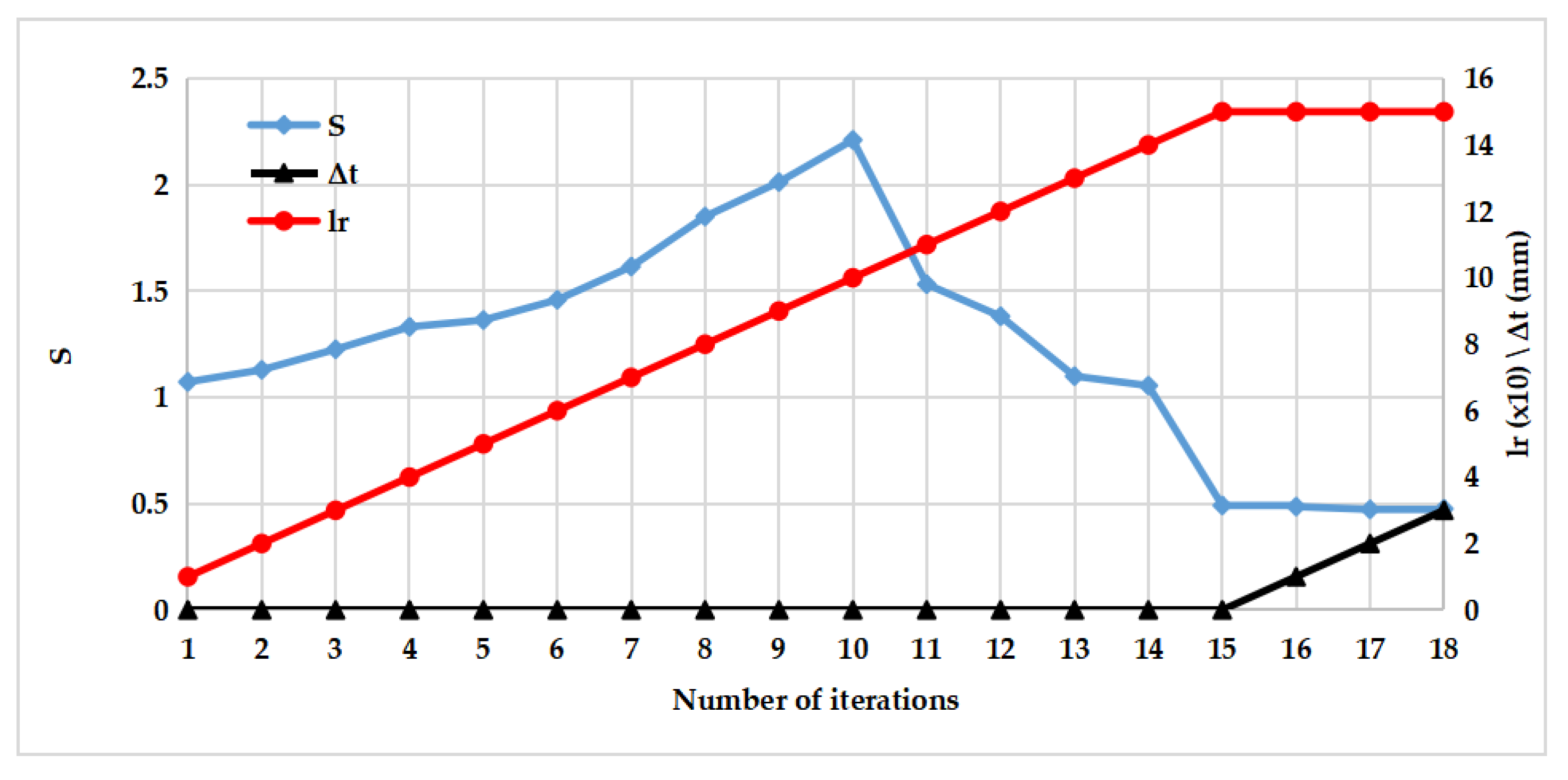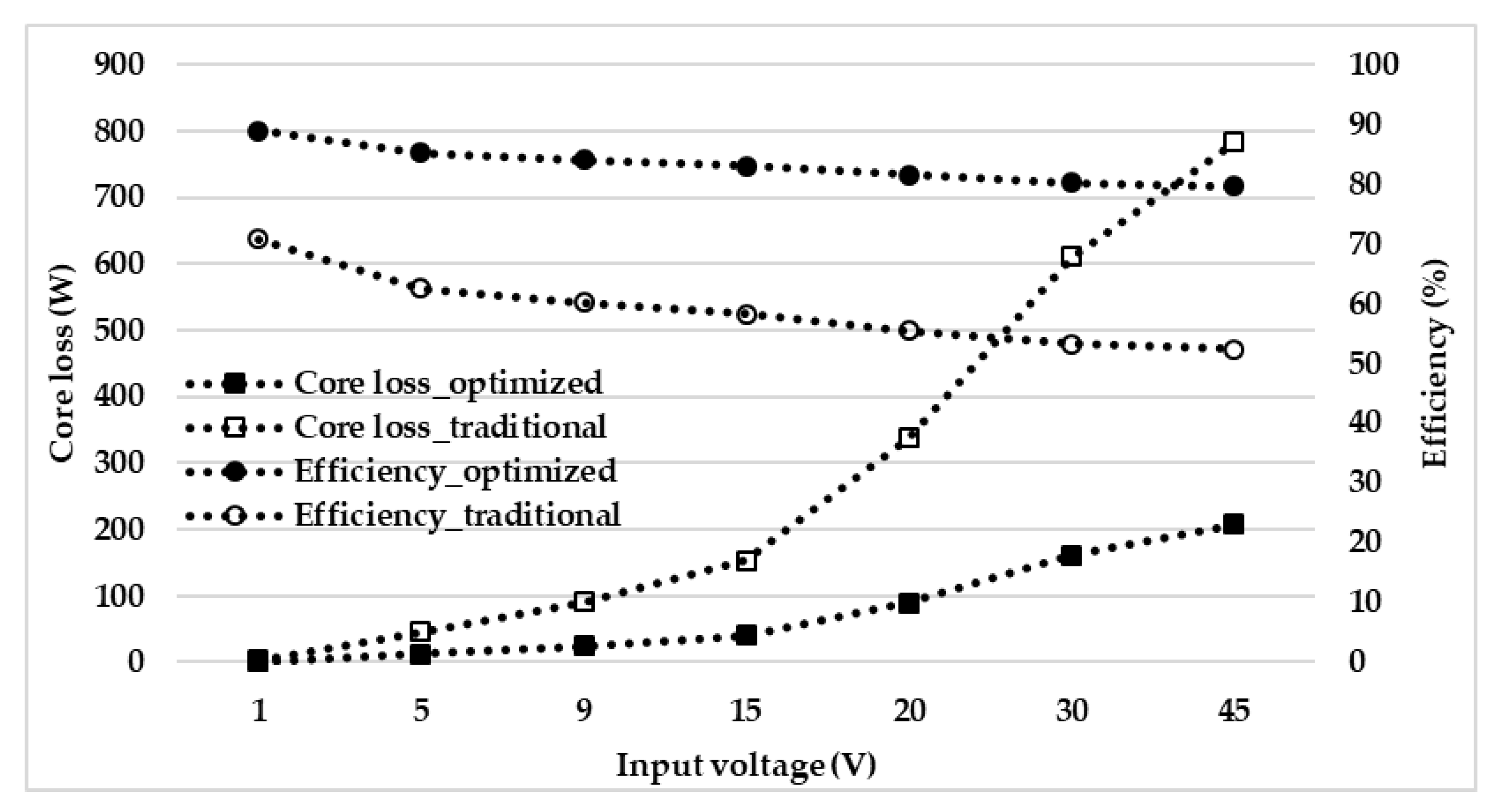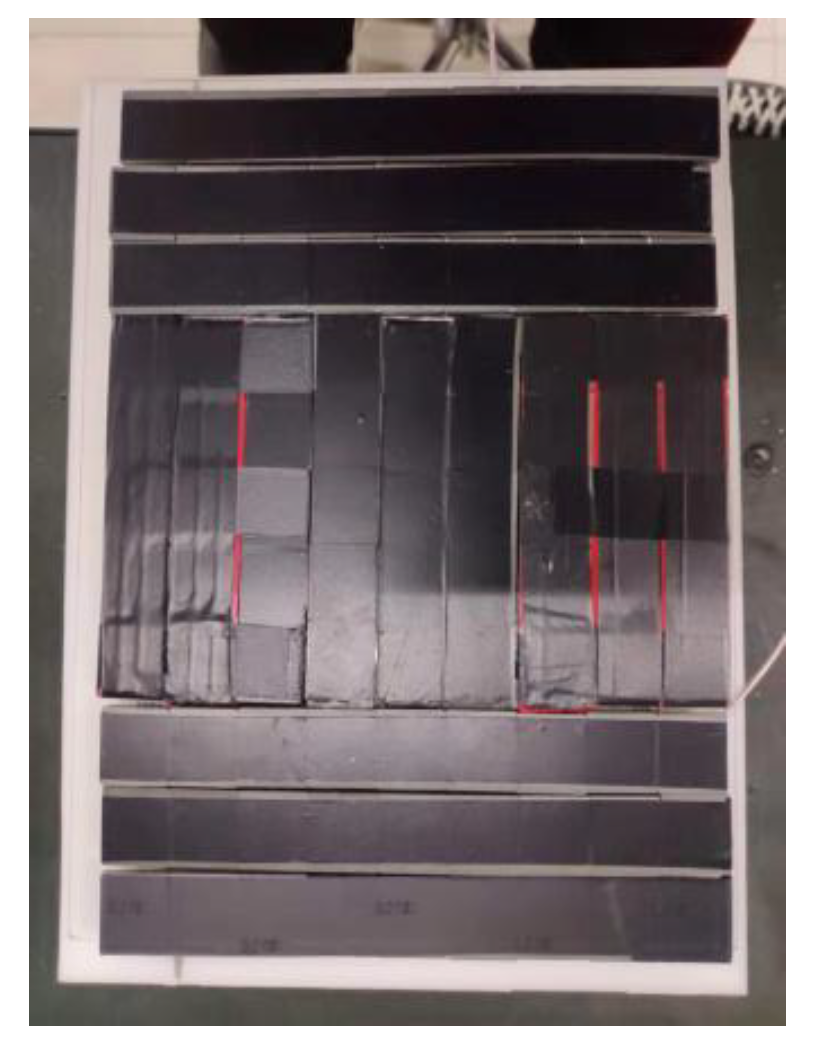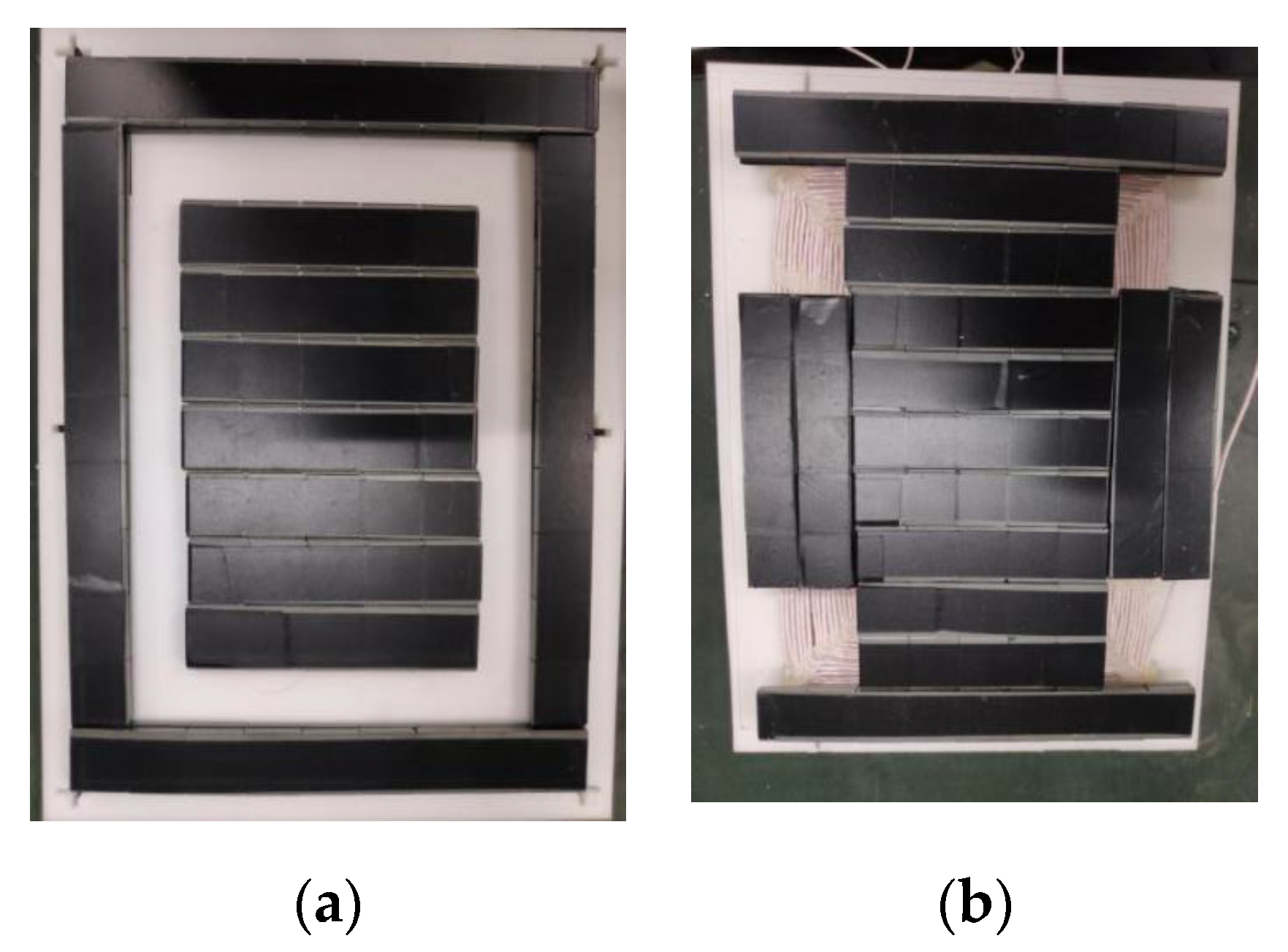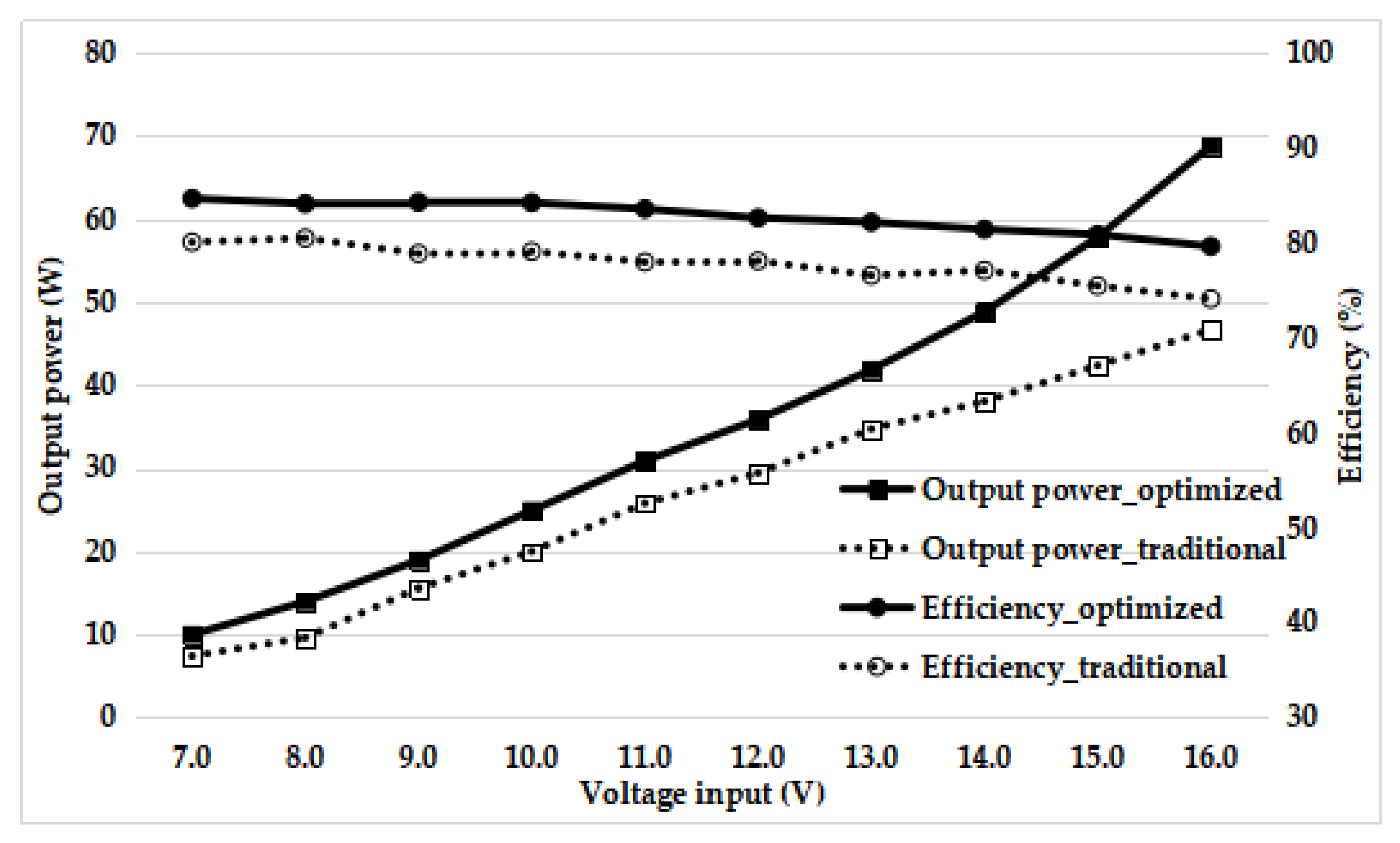1. Introduction
Wireless power transfer (WPT), more widely known as wireless charging technology, is a technology that transmits electrical energy across an air gap by generating an electromagnetic field. From low-power applications (such as electric toothbrushes, mobile phones) to high-power charging systems (such as EVs and railroad trains), wireless charging technology has been widely recognized, researched, and commercialized due to its convenience and intelligence in charging applications. However, the most criticized shortcoming of WPT is that its charging efficiency is lower compared to that of wired charging. Moreover, for EV contactless charging, due to the influence of the divergent magnetic field and the surrounding metal objects, a large amount of ferrite is required to guide the magnetic flux on both the transmitter and the receiver. This undoubtedly increases the weight of the vehicle, and in the ferrite, the core loss is inevitably increased.
The shapes of common wireless couplers in EV wireless charging are generally circular and rectangular. The circular coil can excite a stronger magnetic field in short distance transmission, and the efficiency is higher. However, the square coil has an advantage of tolerance with misalignment over the circular coil [
1]. In other words, when the two coils are displaced horizontally or the air gap becomes larger, the mutual inductance between two circular coils has less robustness. Since the square coil can concentrate a larger magnetic field on the four sides and has more overlapped areas, it has a higher tolerance for misalignment [
2]. A circular wireless charger with an air core is proposed by the author of the paper [
3]. Although the transmission efficiency is increased by the structure of multiple coils, the coupling coefficient is much lower than that of the ferrite core coupler, which is only about 0.1~0.2. The double-D (DD) shape coupler has evolved based on the advantages of the square-shape coupler, and its structure is two square coils connected in series. In practical conditions with less misalignment, such as trams, DD-shaped coils with overlapping areas are also designed to strengthen the central magnetic field [
4]. Based on the DD-shaped coupling coil, the normal designs of its compensation circuit, including series-series (SS), series-parallel (SP), parallel-series (PS), and parallel-parallel (PP), are classified and compared in [
5]. A high-order compensation circuit is proposed to achieve multiple controllable outputs. It is also pointed out in the conclusion of this paper that no matter how large the mutual inductance is, the efficiency can be improved by designing an appropriate compensation circuit.
In order to generate high magnetic field and improve the coupling, an inductive iron based on inductive power transmission has been proposed, which inevitably increases the temperature by several degrees in one minute [
6]. Although the heat should be the criterion and is sufficiently achieved in [
6], such a temperature and loss will severely hinder the system efficiency in wireless charging, and some of the literature has also proposed ways to optimize the core structure. In [
7], the authors made an asymmetric design of the magnetic core structure of the DD-shaped wireless charging coupler for EVs, and also confirmed that this design can avoid the difference between the peak and average voltage induced across the pickup coil and lengthening the fraction of the distance between two track coils available to transfer power to the electric vehicles (EVs). Ref [
8] also proposed the use of DD and Q coils for electric vehicles that has been seen to be a recent trend for EV wireless coils. Combined with the finite element analysis, the aspect ratio of the coil and the ferrite can also be optimized to make the coupling of the system and the placement of the ferrite more effective [
9,
10,
11,
12,
13,
14,
15,
16]. In order to increase the robustness of the air core system during operation, it is often necessary to add additional circuits and coils to control the stability of the system [
10]. Although these optimization methods and research can optimize the performance of the system, they do not involve the consideration of core loss. In the loss analysis, in addition to copper loss and component loss in the circuit, the core loss should also be included [
17]. The efficiency and improvement in key reference papers are listed in
Table 1.
The method of calculating the core loss is constantly changing and refining [
18,
19,
20,
21,
22]. The most classic method is Hysteresis Models, which includes two branches, namely the Jiles–Atherton model and Preisach’s work. The principle of the Jiles–Atherton model is to use iterative processes to estimate parameters, whereas it is limited by the use of a large number of empirical parameters [
23]. The Preisach’s work [
24] can be extended to dynamic effects, while the recognition problems associated with the weight function have led to huge quantities of experimental work, which must be compared with the incremental increase in accuracy. The most widely used empirical equation now is Steinmetz’s original work dating back to the last century. The equation indicates that the core loss is composed of several empirical values, frequency, and peak magnetic field strength. The Modified Steinmetz equation (MSE) allows calculations to be performed in the time domain, as well as the feasibility of calculating irregular objects [
18,
22]. Regarding the core loss under the excitation of non-sinusoidal wave and rectangular wave, corresponding studies have been put forward to improve the empirical estimation method based on Steinmetz equation [
19,
20,
21].
Although a large number of magnetic core calculation methods have been proposed and can be selected in different situations, many of the optimal design methods of the magnetic core structure are still only in the continuous simulation and experimental process, and there is no corresponding response to a certain shape of the coil [
15]. Reference [
15] proposed a magnetic core optimization method for DD-shaped coupling coils. Through the cooperation of FEA simulation software and MATLAB, the magnetic field distribution at different positions is analyzed, and the thickness of the magnetic core is optimized to make the magnetic field distribution more uniform. This optimization design also uses the weight equation and iterative algorithm to ensure the effectiveness of the optimization. However, the limitation of this optimized design is that it fails to consider the weight barrier caused by the increase in thickness. The winding loss due to wiring generates the reaction field that affects the overall loss [
25]. This paper proposes an algorithm that can combine ferrite-less considerations with an iterative method to make optimization more practical.
In order to make the overall efficiency of the system higher and also consider the actual user experience, the following principles should be considered when designing the ferrite structure of the coupler:
- (1)
In order to make the output power higher, the necessary ferrite needs to be added to ensure a higher mutual inductance value and mutual inductance coefficient
- (2)
By adding a compensation circuit, harmonics can be eliminated and electrical efficiency improved, and the ferrite structure needs to be optimized to reduce core loss
- (3)
Due to the greater density of ferrite, the overall weight of the system needs to be considered during the design process.
The second section of this article will introduce the derivation process of coupler efficiency and core loss. The relationship between the coupling coefficient and the ferrite coefficients will also be analyzed by the magnetic circuit equation in this section. In the analysis process, more detailed design suggestions will be put forward, and in the discussion section, the key factors will be analyzed by finite element simulation. In the third section, an optimization algorithm considering the system weight, efficiency, and core loss is proposed. Under the proposed design principles, by setting the weights and optimizing the cycle, the key parameters of the ferrite structure will be output. In order to prove the universality of this optimization method, in the fourth section, the circular, square, and DD coupler ferrites are optimized, respectively, and the system efficiency and core loss after optimization are verified on various power levels.




